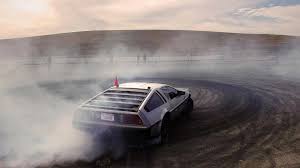
Breaking News
 This roof paint blocks 97% of sunlight and pulls water from the air
This roof paint blocks 97% of sunlight and pulls water from the air
 'Venomous' Republican split over Israel hits new low as fiery feud reaches White House
'Venomous' Republican split over Israel hits new low as fiery feud reaches White House
 Disease-ridden monkey that escaped from research facility shot dead by vigilante mom protecting...
Disease-ridden monkey that escaped from research facility shot dead by vigilante mom protecting...
 Hooters returns - founders say survival hinges on uniform change after buying chain...
Hooters returns - founders say survival hinges on uniform change after buying chain...
Top Tech News
 The 6 Best LLM Tools To Run Models Locally
The 6 Best LLM Tools To Run Models Locally
 Testing My First Sodium-Ion Solar Battery
Testing My First Sodium-Ion Solar Battery
 A man once paralyzed from the waist down now stands on his own, not with machines or wires,...
A man once paralyzed from the waist down now stands on his own, not with machines or wires,...
 Review: Thumb-sized thermal camera turns your phone into a smart tool
Review: Thumb-sized thermal camera turns your phone into a smart tool
 Army To Bring Nuclear Microreactors To Its Bases By 2028
Army To Bring Nuclear Microreactors To Its Bases By 2028
 Nissan Says It's On Track For Solid-State Batteries That Double EV Range By 2028
Nissan Says It's On Track For Solid-State Batteries That Double EV Range By 2028
 Carbon based computers that run on iron
Carbon based computers that run on iron
 Russia flies strategic cruise missile propelled by a nuclear engine
Russia flies strategic cruise missile propelled by a nuclear engine
 100% Free AC & Heat from SOLAR! Airspool Mini Split AC from Santan Solar | Unboxing & Install
100% Free AC & Heat from SOLAR! Airspool Mini Split AC from Santan Solar | Unboxing & Install
 Engineers Discovered the Spectacular Secret to Making 17x Stronger Cement
Engineers Discovered the Spectacular Secret to Making 17x Stronger Cement
Meet Marty, The Electric Autonomous DMC DeLorean That Drifts By Itself

Will autonomous cars ever be as competent as human drivers? That is the most pressing question about self-driving technology. Because of Jonathan Goh and Chris Gerdes, from Stanford's Dynamic Design Lab, we'll have an entirely opposite question to make: will humans ever be as competent as this autonomous electric car? It is way more than that, to be honest. It's a 1981 DMC DeLorean with two electric motors on the rear axle that is called the Multiple Actuator Research Testbed for Yaw control. Marty, for short.
This car is fantastic for much more than the clever name, a tribute to Michael J. Fox's character in the "Back To The Future" trilogy. It also goes sideways as if it was not a huge challenge. If some cars offer a drift mode, such as the Ford Focus RS, there will be a time in which this mode will include the vehicle doing the whole process for the driver.
Although it may look like this, the goal of the research is not making smoke with the tires. It is to make the autonomous car able to handle difficult situations in the best way possible. Not only slippery surfaces, as Gerdes mentions in the video below, but also avoiding obstacles and other difficult situations.



